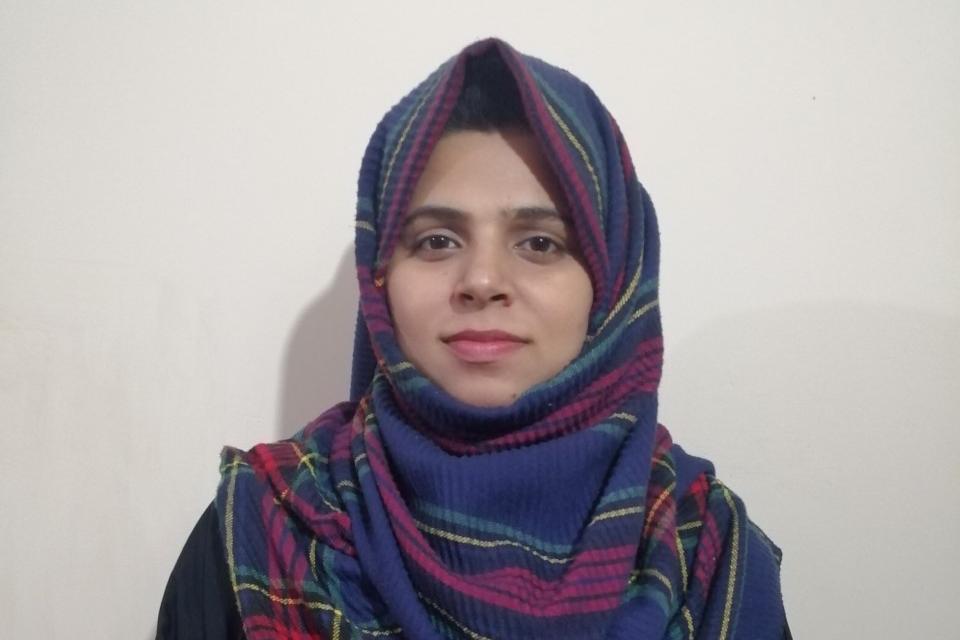
Characterization of epitope and Fcγ receptor specificity of HCV and HBV neutralizing antibodies, and retrospective analysis of HCV infections in general population
Year
2020
Supervisor:
Dr. Shahzad Ul Hussan
Students:
Asma Ahsan
MS/PhD
PhD
Reference / Filters
Life Sciences
Abstract:
Hepatitis B virus (HBV) and Hepatitis C virus (HCV) infections occur in approximately 257 million and 170 million people, respectively in the world. This study incorporates three different aspects of HCV and HBV infections including understanding the role of linear epitope specific antibodies in spontaneous viral clearance, retrospective analysis of HCV prevalence in the Punjab province of Pakistan and understanding the role of different classes of the Fcγ receptors in HBV spontaneous viral clearance.
Around 25% of the HCV infected patients can clear the virus without any treatment and the role of antibodies in such spontaneous virus clearance has not been clear. In this study, we used combination of peptide ELISA, pseudo-typed HCV neutralization assay (HCVpp) and peptide competition HCV neutralization assay to identify the presence of conserved linear epitopes specific antibodies in the sera of chronic patients and self-resolver individuals to understand the role of these antibodies in viral clearance. Our results suggested a key role of antibodies specific for a conserved linear epitope in the E2 protein (amino acid 434-446), in spontaneous viral clearance. In the population-based study to perform retrospective analysis of HCV infections in the Punjab province involving over 66,000 participants from all major cities, we observed that 17.3% of the population had contracted the infection. We identified two geographical regions, Faisalabad and Okara districts, and an occupational group, farmers, with significantly high HCV seroprevalence. These socio-demographic groups were identified as the potential focused groups for follow-up studies on factors contributing to the high HCV prevalence in these groups towards orchestrating effective prevention, control and treatment.
The study to investigate the role of different Fcγ receptors in viral clearance in HBV vaccinated and self-resolver individuals suggested that vaccinated individuals could activate all three classes of Fcγ receptors including FcγRI, FcγRII and FcγRIII while self-resolvers could activate primarily the FcγRI, and FcγRIII receptors. These results describe the role of different Fcγ receptors in spontaneous viral clearance and indicate that the mechanism of spontaneous clearance of the virus could be slightly different than clearance through vaccine induced prophylaxis. Overall this study identified demographic groups with high HCV prevalence in the most populated province of Pakistan and provided necessary information related the role of particular epitope specific antibodies in spontaneous clearance of HCV and the role of Fcγ receptors in spontaneous clearance of HBV. This information particularly related to HCV could be of high significance in vaccine design perspective.
Around 25% of the HCV infected patients can clear the virus without any treatment and the role of antibodies in such spontaneous virus clearance has not been clear. In this study, we used combination of peptide ELISA, pseudo-typed HCV neutralization assay (HCVpp) and peptide competition HCV neutralization assay to identify the presence of conserved linear epitopes specific antibodies in the sera of chronic patients and self-resolver individuals to understand the role of these antibodies in viral clearance. Our results suggested a key role of antibodies specific for a conserved linear epitope in the E2 protein (amino acid 434-446), in spontaneous viral clearance. In the population-based study to perform retrospective analysis of HCV infections in the Punjab province involving over 66,000 participants from all major cities, we observed that 17.3% of the population had contracted the infection. We identified two geographical regions, Faisalabad and Okara districts, and an occupational group, farmers, with significantly high HCV seroprevalence. These socio-demographic groups were identified as the potential focused groups for follow-up studies on factors contributing to the high HCV prevalence in these groups towards orchestrating effective prevention, control and treatment.
The study to investigate the role of different Fcγ receptors in viral clearance in HBV vaccinated and self-resolver individuals suggested that vaccinated individuals could activate all three classes of Fcγ receptors including FcγRI, FcγRII and FcγRIII while self-resolvers could activate primarily the FcγRI, and FcγRIII receptors. These results describe the role of different Fcγ receptors in spontaneous viral clearance and indicate that the mechanism of spontaneous clearance of the virus could be slightly different than clearance through vaccine induced prophylaxis. Overall this study identified demographic groups with high HCV prevalence in the most populated province of Pakistan and provided necessary information related the role of particular epitope specific antibodies in spontaneous clearance of HCV and the role of Fcγ receptors in spontaneous clearance of HBV. This information particularly related to HCV could be of high significance in vaccine design perspective.
Publication:
Ahsan A, Khan AZ, Javed H, Mirza S, Chaudhary SU, Shahzad-Ul-Hussan S. Estimation of hepatitis C prevalence in the Punjab province of Pakistan: A retrospective study on general population. PLoS One. 2019 Apr 3;14(4):e0214435. doi: 10.1371.

